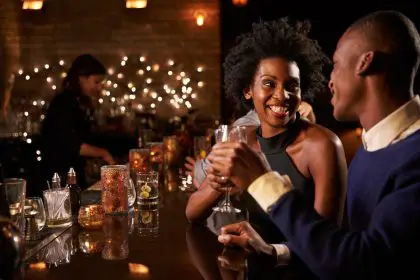Social interactions continue to evolve in surprising ways, particularly in urban environments where traditional meeting spaces feel increasingly impersonal. Public restrooms, especially in upscale venues, have unexpectedly emerged as locations for casual conversations and friendly encounters. This shift reflects broader changes in how people connect in modern social settings, where authentic interactions often happen in unexpected places.
The evolution of social spaces
Traditional venues like bars and cafes often present challenges for genuine interaction, with loud music and crowded spaces making meaningful conversation difficult. The overwhelming nature of these environments has led people to seek out quieter alternatives where they can engage in actual conversation without shouting or competing with background noise.
Modern venue design plays a significant role in this trend. Many establishments now extend their aesthetic consideration to all areas, creating comfortable environments throughout their spaces. This attention to design has transformed formerly utilitarian spaces into extensions of the social environment, complete with thoughtful lighting, comfortable seating areas, and sophisticated finishes that encourage people to linger rather than rush through.
Understanding the social shift
The emergence of these new social spaces reflects a deeper cultural change in how people interact. In an era dominated by digital connections, many individuals crave authentic, face-to-face interactions. The relative calm and intimate nature of these spaces provides a natural environment for genuine conversations to unfold.
This shift particularly resonates with younger generations who often feel overwhelmed by traditional social settings. The pressure to perform in heavily social environments can feel exhausting, making quieter, more intimate spaces attractive alternatives for meeting new people or deepening existing connections.
The influence of modern design
Contemporary establishments have recognized the importance of creating welcoming environments throughout their venues. This comprehensive approach to design includes careful consideration of lighting, acoustics, and spatial flow. High-end venues often incorporate luxury materials, designer fixtures, and artistic elements that transform utilitarian spaces into sophisticated social environments.
These design choices significantly impact social behavior. Well-designed spaces naturally encourage positive interactions while maintaining appropriate boundaries. Professional lighting creates flattering yet clear visibility, while thoughtful layout planning ensures comfort without compromising functionality.
Social media’s role in changing perceptions
Digital platforms have fundamentally altered how people view and use public spaces. Social media documentation of innovative venue designs and unexpected social interactions has helped normalize the idea of forming connections in these non-traditional spaces. Platforms like Instagram and TikTok frequently showcase creative venue features, encouraging establishments to invest more in their overall design and atmosphere.
The viral nature of social media has also highlighted successful design elements that facilitate positive social interactions. Venues now regularly incorporate photogenic features and comfortable gathering areas, understanding that these elements contribute to both the user experience and the establishment’s online presence.
Maintaining appropriate boundaries
While these spaces may foster social connections, maintaining appropriate behavior remains paramount. Establishments must carefully balance creating welcoming environments while ensuring all patrons feel safe and comfortable. This includes implementing clear policies about acceptable conduct and training staff to manage situations appropriately.
Professional security measures play a crucial role in maintaining this balance. Modern venues often incorporate subtle but effective security features into their design, ensuring patron safety without creating an oppressive atmosphere. This might include well-planned sightlines, appropriate lighting levels, and strategic staff positioning.
The role of venue management
Successful venues recognize that creating positive social environments requires more than just attractive design. Professional staff training, regular maintenance, and clear policies all contribute to maintaining appropriate standards of behavior while facilitating positive social interactions.
Management must consider various factors, from practical maintenance schedules to staff training in handling different situations. This comprehensive approach ensures that these spaces remain comfortable and welcoming while maintaining necessary boundaries and safety standards.
Looking forward
As social interactions continue to evolve, venues must adapt their approaches to meet changing expectations. This includes staying current with design trends while maintaining high standards of safety and comfort. Future developments may include more innovative uses of space, enhanced comfort features, and sophisticated systems for ensuring patron well-being.
The key to success lies in creating environments that facilitate positive social interactions while maintaining appropriate standards of behavior. This balance requires ongoing attention to design, policy, and management practices, ensuring that all patrons can enjoy these spaces comfortably and safely.
This story was created using AI technology.











